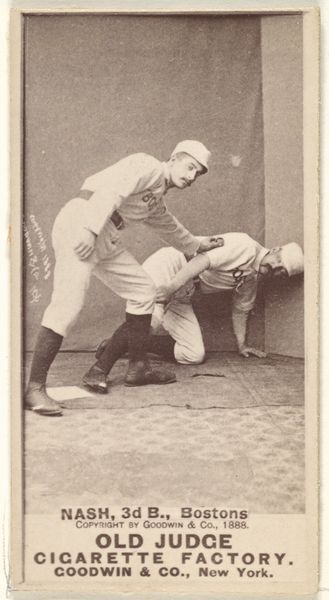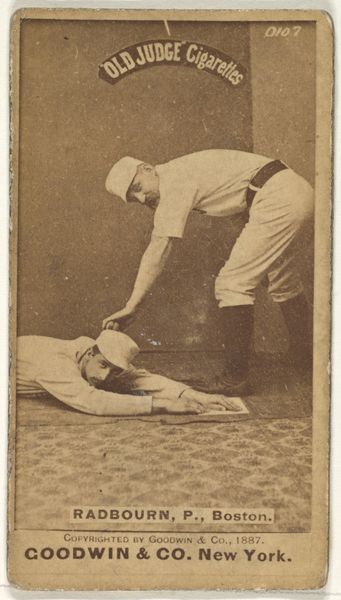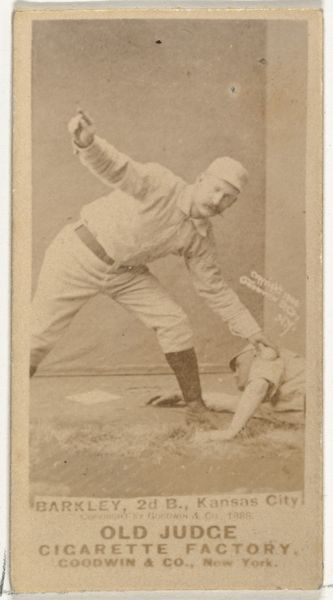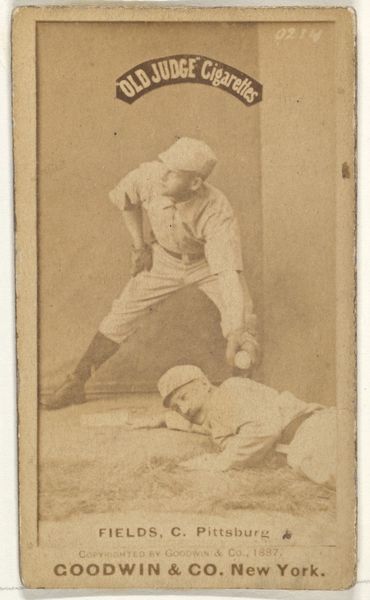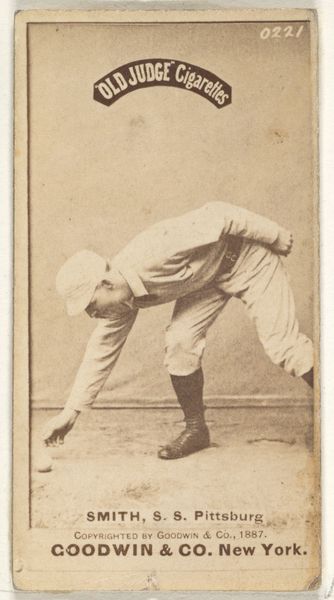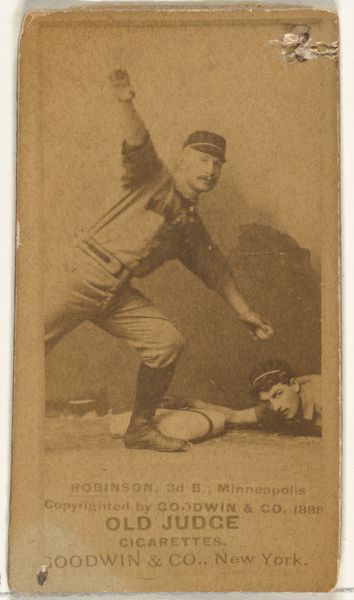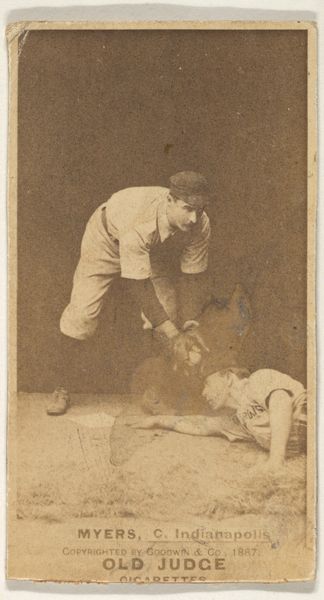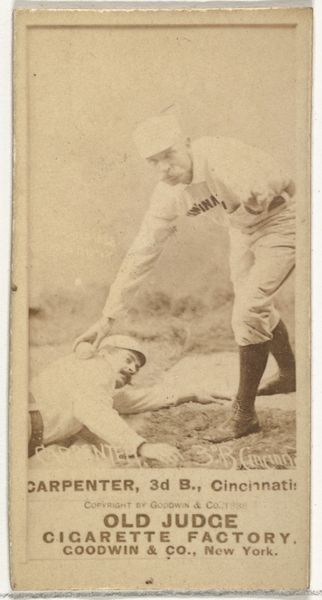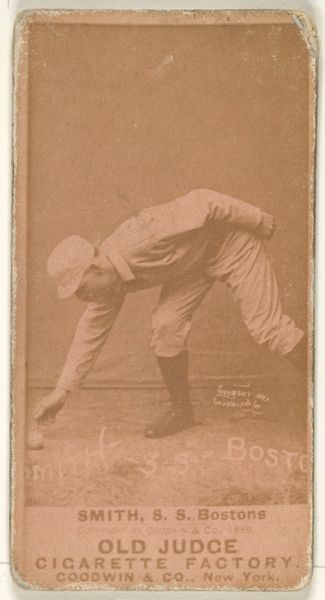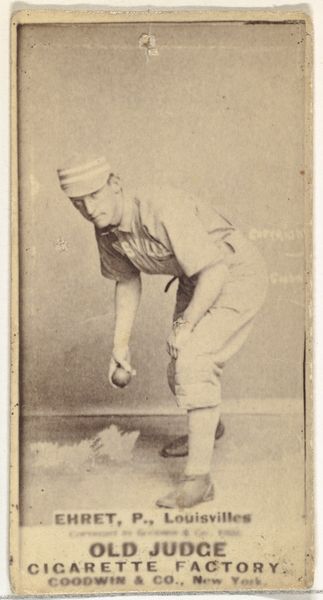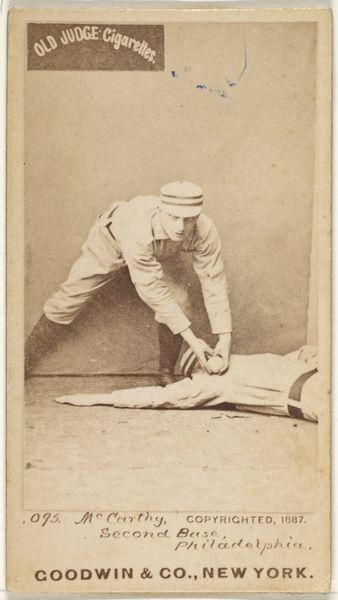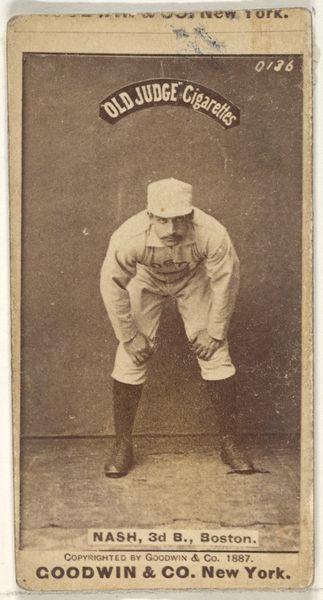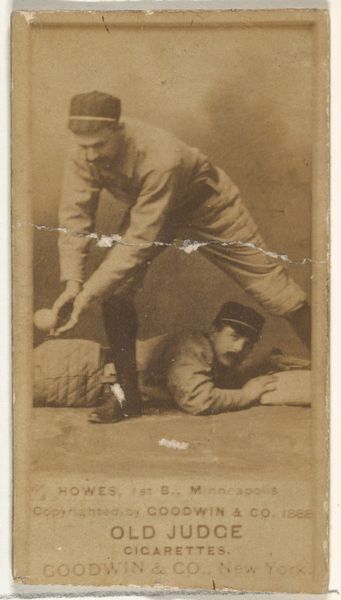
Nash, 3rd Base, Boston, from the Old Judge series (N172) for Old Judge Cigarettes 1887
0:00
0:00
drawing, print, photography, albumen-print
#
portrait
#
drawing
# print
#
baseball
#
photography
#
19th century
#
men
#
athlete
#
albumen-print
Dimensions: sheet: 2 11/16 x 1 3/8 in. (6.9 x 3.5 cm)
Copyright: Public Domain
Curator: This is a piece titled "Nash, 3rd Base, Boston" from the Old Judge series, made around 1887 by Goodwin & Company. It’s an albumen print, a photographic print using egg whites. It was originally included in packs of Old Judge Cigarettes. Editor: My first impression is the staged awkwardness of the players and the way they interact; it feels oddly intimate and vulnerable. I wonder if the picture has anything to do with the construction of turn-of-the-century masculine ideals? Curator: Precisely. Baseball was emerging as the "national pastime," heavily entangled with evolving concepts of masculinity and labor. These early baseball cards served as both promotion and a form of cultural inscription. They were, and still are, tools in identity formation. Editor: And the commercial context is impossible to ignore, of course. The card is primarily designed to move Old Judge Cigarettes. Who was meant to see these images, what was the relation between the consumer and player labor? Curator: A complex connection for sure! The albumen printing process itself, labor-intensive and artisanal, stands in sharp contrast to the mass-produced cigarettes it advertised. Editor: Let’s think also about baseball’s function as labor. The figure of the athlete emerged as a modern working-class hero whose craft was deeply commodified within new regimes of industrialized recreation. Curator: Furthermore, look at Nash himself. The staged tableau almost feminizes him, especially considering the historical hyper-masculinity baseball fostered. He looks like a model; this is the image as posed labor. Editor: Right, even his uniform bears marks of design. If the print is meant to evoke a heroic figure, the materiality undercuts it. This is a well-manufactured object meant to project ideals and turn profit. Curator: Well, by placing this card in the larger conversation about identity, performance, and capital, Goodwin & Company opens itself to a contemporary critique of sports and advertising—which I welcome. Editor: Indeed. Even in its limited, reproducible form, the piece is a powerful meditation on the human figures—Nash in particular—that uphold entire markets.
Comments
No comments
Be the first to comment and join the conversation on the ultimate creative platform.
